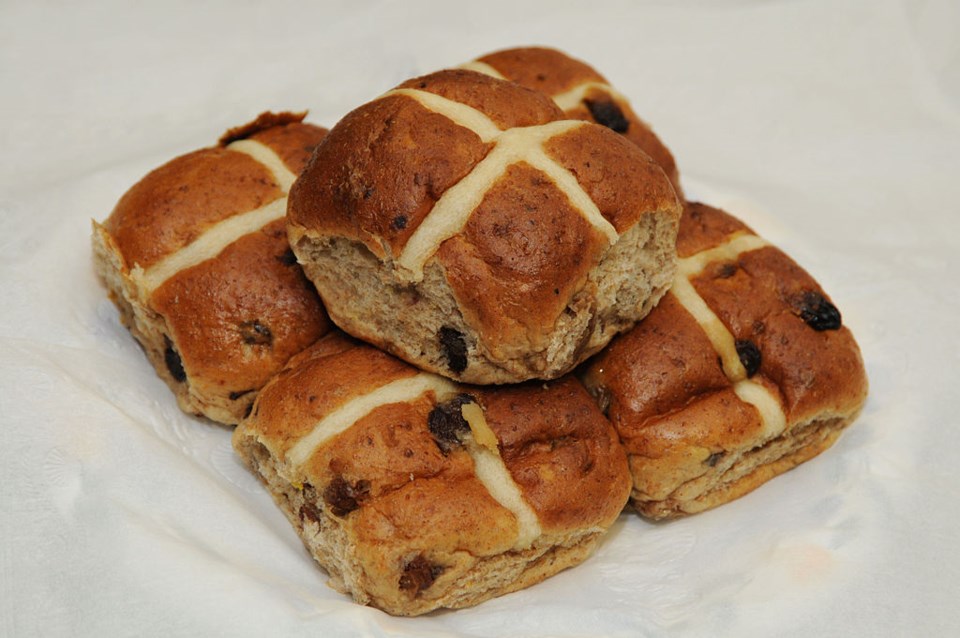Easter is a day of food and chocolate: ham, buns, mashed potatoes, etc. But obviously not everyone from around eats the same thing traditionally on Easter.
Eggs are a big Easter motif. We typically just decorate them here, but over in Italy they use them to decorate food. The Mona de Pascua cake is eaten as a symbol of spring and to celebrate the end of Lent. The cake looks like a giant doughnut topped with hardboiled eggs and is traditionally given from godparents to their godchildren. The eggs are added because traditionally dedicated Catholics would go without meat or eggs during Lent, so the eggs were saved and used in the cake as a celebration.
It’s not strictly for Easter, but a traditional food called fesikh eaten in Egypt during spring celebrations is a fermented, salted, and dried fish. Traditionally, it is dried in the sun before being preserved in salt and the process is passed down in the family from father to son. However, be careful if you’re consuming this: there are cases of food poisoning every year from incorrectly prepared fesikh.
Capirotada is a Mexican bread pudding-type dessert eaten during the Lenten period. The usual ingredients may include apples, dates, apricots, peanuts, almonds, and more. Some recipes include aged cheese or meat, and the ingredients are largely the same as what was used in the 17th century. The food is seen as symbolic of Christ’s death. The syrup represents his blood, the raisins represent the nail on the cross, the bread is the Body of Christ, and the cinnamon sticks are the wood of the cross. The dish is served on Good Friday.
Hot cross buns are a sweet bun eaten in the UK, Ireland, Australia, and other places. Though it’s an unassuming pastry, there are many superstitions surrounding them. One superstition says that buns baked and served on Good Friday will not go bad in the following year. As well, it’s said that giving a piece of hot cross bun to a sick person will help them recover. Sharing a hot cross bun with someone means the two will be friends throughout the coming year.
Pastiera is a pastry from Naples made with ricotta cheese. While no one knows for sure where it came from, one story is that a nun wanted the cake to smell like the flowers of orange trees that grew in the convent’s gardens, so she added perfumed water as well as the other ingredients to make the pastiera. The mythical explanation for pastiera is that it was eaten during the pagan celebrations of spring and included an egg to symbolize new life.
Considering the varied type of Easter food, maybe 2015 is the year to add something new to the Easter table.




